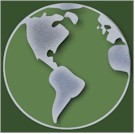Advanced English
Lesson 12 - Health
Reading
On This Page
- Read an article about how to create an emergency kit.
- Answer comprehension questions.
English Reading Exercise
How to make a emergency kit

What would you do if you were on the road and had an emergency? Would you have what you need in your car? You should have a first aid/emergency kit available wherever you are. Put together one for your home and car and make sure one is available at work or school.
You'll need first aid items in your emergency kit. First aid kits often have medicines. You may want to include aspirin and/or acetaminophen (like Tylenol). You might also want hydrocortisone and an antibiotic ointment (like Neosporin). If you have special medical needs, you may need to keep other medicines on hand. For example, if you have severe allergies, you may need epinephrine. Keep in mind that many medicines can be damaged by heat. Read the label and take it out of your car on hot days. Also check expiration dates periodically and throw away and replace any expired medicines.
Keep a variety of sizes and shapes of bandages in your kit. Don't forget to include gauze, scissors, and compress dressings. Gloves are also a good idea to help protect you from infection. Tweezers can be used to remove splinters. Finally, unless you are a doctor, put a first aid instruction booklet in your kit so you know what to do in an emergency. To find out more detail about what kinds of bandages and other items need to be included in your first aid kit, visit http://www.redcross.org/prepare/location/home-family/get-kit/anatomy.
In addition to first aid items, you'll need to be prepared for other emergencies. What would you do if there's an earthquake, flood, or hurricane and you are isolated and without power? Your highest priority will be food and water. Humans can't survive long without drinking water so make sure and keep an emergency supply in your house and a smaller supply in your car. The Red Cross recommends keeping one gallon per person, per day. You'll need a three-day supply at a minimum. You'll also need to have a supply of emergency non-perishable food (such as canned or boxed food). When planning your emergency foods, keep in mind that you may not be able to cook after a disaster. Plan foods such as nuts that you don't have to cook, rather than rice, which requires cooking.
You'll need other emergency items in your home as well. Since you may be without electricity, you'll need a flashlight and extra batteries and a battery-powered or hand-crank radio (to listen for emergency information). Think of what sanitation and personal hygiene products you'll need if you're stuck in your home for a while. Keep copies of important documents and store the originals in a safe place such as a fireproof box or safe deposit box at the bank. Speaking of banks, after a disaster banks may be closed and ATM (Automated Teller Machines) may not be working. Keep extra cash in your home, especially small bills, and don't travel without cash in your wallet.
You may be in your car when an emergency happens. In addition to your car first aid kit, you'll need some emergency water and food (but not as much as in your home). A few water bottles and snack foods such as granola bars will not take up too much space in your car and yet could help in an emergency. A multi-purpose tool, such as a Swiss Army knife, could be useful in many emergency situations. Some people keep an emergency blanket in their car. They sell compact blankets that can fit in your glove compartment when folded up and yet will keep you warm in an emergency. Finally, make sure you have a car mobile phone charger. You'd hate to be in an isolated place with a dead mobile phone battery.
Spending a little time now to prepare an emergency kit can save your life in a disaster. Take the time to put together a kit and read more about emergency preparation at www.redcross.org.
Instructions
Select "True" or "False" for every statement.
Click on NEXT to go to the next page in the lesson.

